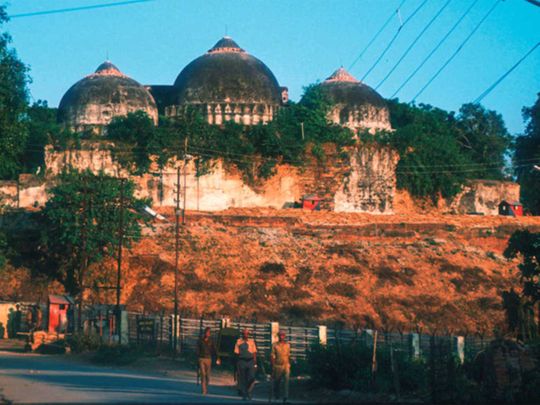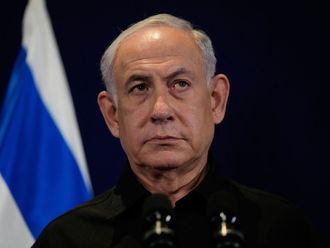
Dubai: In a major development, India’s Supreme Court on Wednesday agreed to resume mediation efforts to seek an out-of-court settlement in the century-old temple-mosque dispute in Ayodhya town.
The court also made it clear that daily court hearings will continue and said it wants to close the case by October 18.
Wednesday’s ruling comes over a month after a high-powered panel informed the Supreme Court about the failure of the mediation process early August. The court then resumed hearing multiple petitions challenging a 2010 high court order which divided the disputed site in Ayodhya into three parts – two to Hindus and one part to Muslims.
What is the dispute?
Hindus and Muslims want a 2.77 acre piece of land where Mughal-era Babri mosque stood till December 1992 when it was demolished by a mob of Hindus who believe deity Ram was born at the site. The demolition led to nation-wide riots in a wave of violence that killed hundreds and deeply impacted the delicate social fabric of the country. The dispute, which originated in British India, also impacted the nation’s politics and led to the birth of a popular right-wing movement.
Why mediation again?
The court’s acceptance of the mediation process on Wednesday came after the main Muslim petitioner Central Sunni Waqf Board wrote a letter indicating that an out-of-court settlement can be arrived at within “one or two weeks”. Sources close to the board shared a copy of the letter which says: “We sincerely believe that an out of court settlement of this dispute would have heralded the country into a new era of social harmony, mutual respect and brotherhood.”
The letter dated September 5 and signed by Zafar Ahmad Faruqui, the board chairman, further says: “We have been in touch with several other parties, both Muslims and Hindus, and all of us agree that if another attempt is made under the mediators [appointed by court], the chances of a settlement are bright… Since the concrete terms of settlement were clearly spelt out earlier, it will not take long for us to finalise and settle this issue once and for all.” The letter did not disclose the terms of the proposed settlement but emphasized it could be done in “one or two weeks”.
On Wednesday, a Supreme Court bench headed by Chief Justice Ranjan Gogoi accepted this argument and allowed the mediation process to resume while setting a time frame.
Why mediation failed earlier?
In July, Gulf News exclusively reported that Muslims petitioners had agreed to give up claims on the disputed land and allow the construction of a Ram temple. In August, however, the court appointed mediators informed the Supreme Court that their efforts failed to reach a settlement. Later, it emerged that some Muslim and Hindu parties had rejected the terms of the settlement which remain a secret. Sources told Gulf News that some Muslim clerics, including powerful cleric Maulana Arshad Madani who heads an influential organisation of Muslim scholars Jamiat Ulema-e-Hind, declined to support this settlement.
Since then, a lot has happened. On August 30, Maulana Madani met Mohan Bhagwat, the chief of the powerful Hindu nationalist organisation Rashtriya Swayamsewak Sangh or RSS which is the parent organisation of India’s ruling Bharatiya Janata Party. What happened during that 90-minute meeting in New Delhi was never disclosed.
What next?
The Supreme Court has not set any deadline for the mediation process but clearly said on Wednesday that the court hearings will wrap up on October 18 and a verdict will be reserved. The mediators can submit their report even after the verdict is reserved, the bench said. The Chief Justice Gogoi retires on November 17 and a verdict is likely to be issued before this date.








